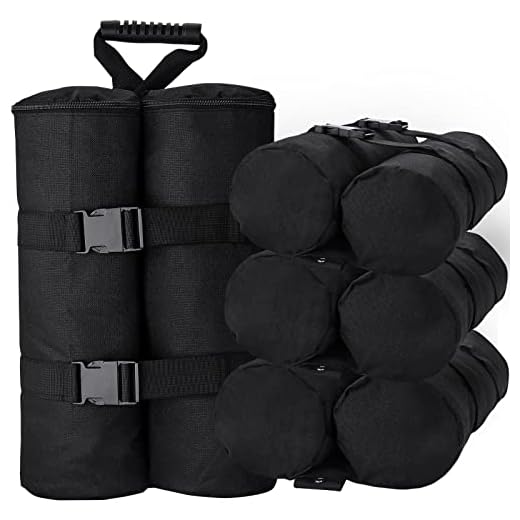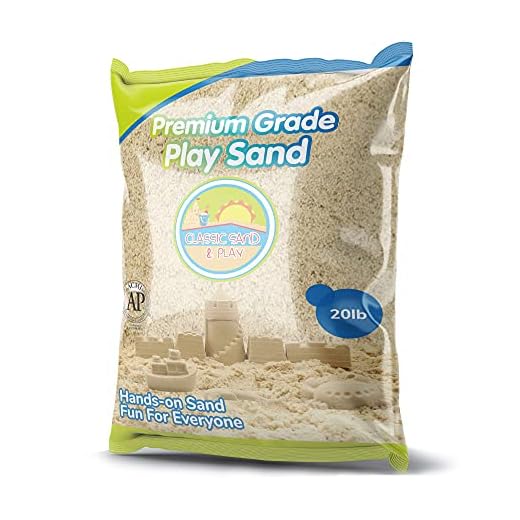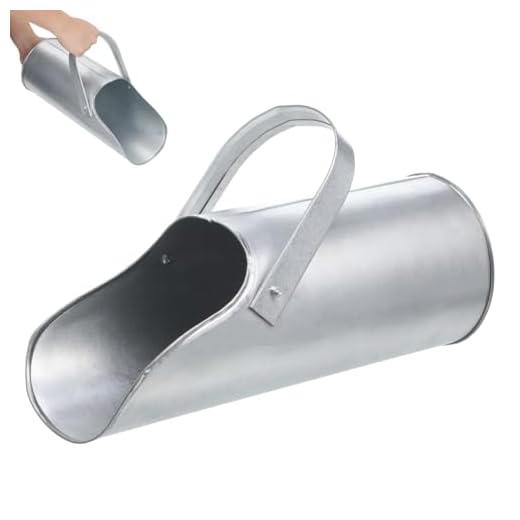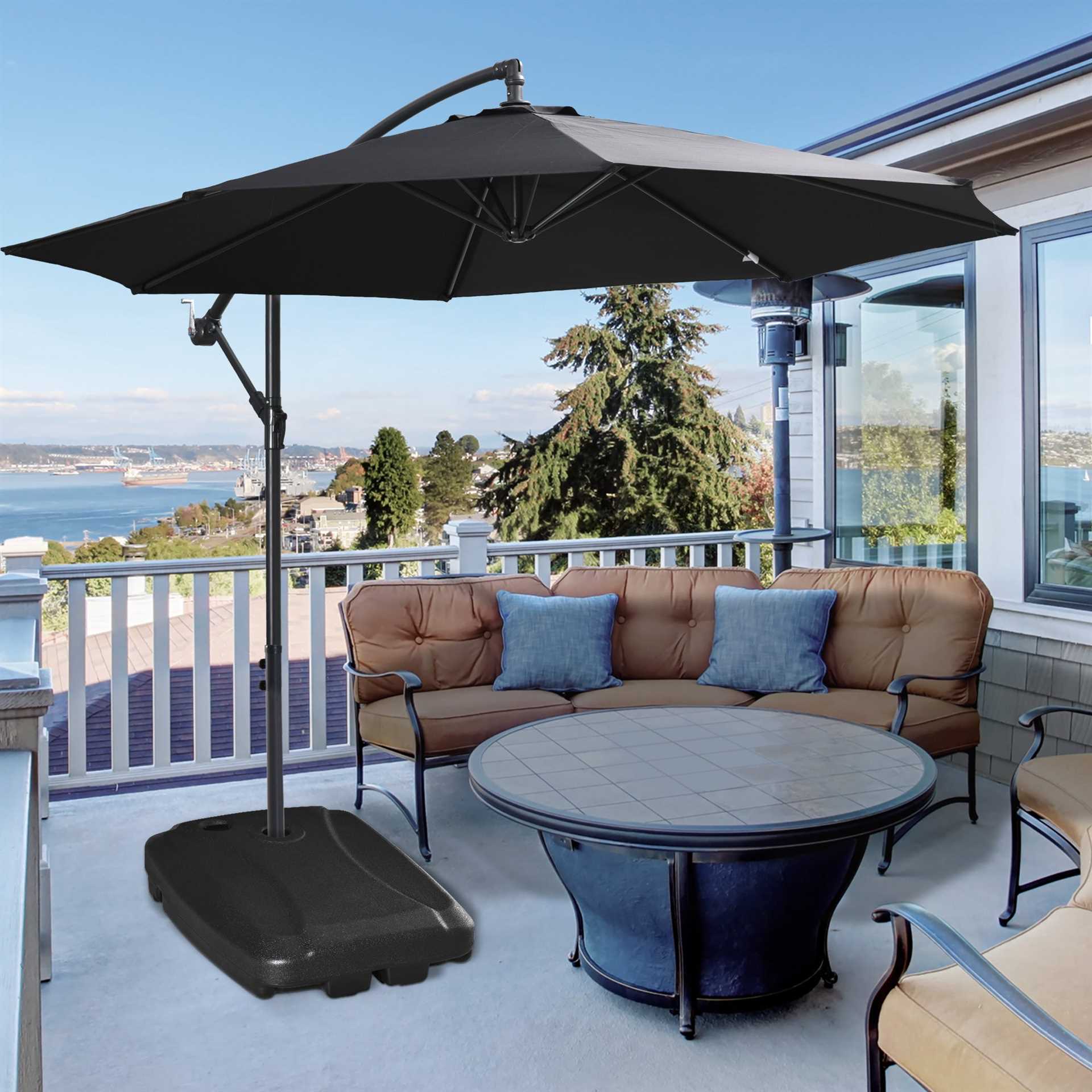




To ensure your outdoor canopy remains stable and upright, using a weight method is advisable. This article provides a step-by-step guide tailored for homeowners and outdoor enthusiasts looking to maximize the security of their canopies against wind and adverse weather. The information detailed here will help you achieve a well-balanced setup, enhancing your outdoor experience.
We will explore the required materials, the process of adding weight, and tips for maintaining stability throughout the season. From selecting the right type of container to the best techniques for filling it, this guide covers all aspects to keep your structure firmly in place.
By following these practical tips, you can prevent your canopy from tipping over, ensuring a safe and enjoyable outdoor setting for gatherings, parties, or simply relaxing in your backyard.
Optimal Method for Securing a Canopy Fixture
Utilize dry, clean material for optimal stability. Begin by selecting a robust container that can hold a significant amount of weight. A heavy-duty plastic or metal receptacle is preferable, as it can withstand outdoor elements.
Ensure the container is free from debris and moisture. Pour the chosen granulated material into the receptacle. Fill it approximately halfway to allow for easy handling when inserting the post. After the initial fill, insert the pole securely, ensuring it is centered.
Steps for Enhanced Stability
After positioning the pole, continue adding the material around it. Tap the sides of the container gently to encourage settling and eliminate air pockets. Once filled to the desired level, ensure the pole is vertical and stable.
- Securely tighten any locking mechanisms on the receptacle.
- Check for vertical alignment of the pole.
- Consider adding a waterproof cover on top to prevent moisture from affecting the material.
By following these steps, a stable canopy setup can be achieved, providing shade and comfort during outdoor activities.
Selecting the Right Type of Sand for Your Umbrella Base
Choosing the appropriate type of granular material for securing your outdoor shade structure is vital for stability. Not all types of granules are created equally, and understanding their characteristics can lead to better performance in various conditions.
Natural sand is commonly recommended due to its weight and ability to compact well. It typically consists of fine particles that fit closely together, providing a solid foundation. However, consider the moisture content; damp sand can become heavy and may not be suitable for all situations.
Types of Sand to Consider
- Play Sand: This type is usually finer and cleaner, making it easy to handle. It works well for lighter structures but may not provide enough weight for larger setups.
- Construction Sand: Coarser and heavier, construction-grade material offers excellent stability. It is ideal for windy areas.
- Concrete Sand: This option is also heavy and has angular grains that lock together effectively. It’s suitable for permanent installations.
When selecting, assess the local climate and the expected wind conditions. In areas with frequent gusts, opting for a denser and heavier type will ensure better anchoring. Additionally, look for granules that are free from debris or organic materials, as these can cause issues over time.
Lastly, consider the ease of handling and transportation. Some types of granular material may be more challenging to work with, especially if you need to reposition your setup periodically. Always prioritize a balance between weight and manageability to achieve the best results.
Preparing the Umbrella Base for Sand Filling
Ensure the structure is clean and dry before proceeding. This eliminates any debris that might interfere with the stability of the filled container. Inspect for any cracks or damage that could affect its performance once filled.
Select a suitable location for the container, preferably on a flat and stable surface. This will help maintain balance and prevent tipping over when the unit is in use.
Steps for Preparation
- Remove any existing contents from the container.
- Wash the inside thoroughly, ensuring all residues are removed.
- Allow the container to dry completely to prevent moisture from compromising the filling material.
- Check for any sharp edges or protrusions that could cause issues during filling.
Consider using a funnel to facilitate the process, minimizing spillage and ensuring an even distribution of the filling material. If necessary, use a tarp or sheet to catch any sand that may escape during the transfer.
Once prepared, the container is ready for the filling process. Monitor the filling to ensure it reaches the desired weight for optimal stability.
Step-by-Step Guide to Filling the Base with Sand
Begin by selecting clean and dry granules to ensure optimal weight and stability. Avoid using moist or dirty material, as this may lead to clumping and reduced effectiveness.
Next, you will need a funnel or a similar tool to ease the pouring process. This will help direct the granules into the designated area without spilling.
Procedure
- Place the container in a stable position on a flat surface.
- Using the funnel, pour the granules slowly into the container. Fill it to about three-quarters full to allow for expansion if needed.
- After filling, gently shake or tap the container to settle the material. This will help eliminate air pockets and enhance stability.
- Once settled, check the weight of the container. If it feels insufficient, add more granules until the desired weight is achieved.
- Finally, securely close the opening of the container to prevent any leakage or spillage.
Following this method will ensure a well-balanced setup, providing the necessary support for your outdoor equipment. Regular checks on the stability of the container during use will help maintain safety and effectiveness.
Sealing and Securing the Umbrella Base After Filling
After placing the desired material in the support structure, it is vital to ensure that it is properly sealed. This not only prevents spillage but also maintains the integrity of the contents over time. A tightly sealed unit will also reduce the chances of moisture entering, which can lead to mold and deterioration.
Utilize a durable sealant or lid specifically designed for the type of material used. For instance, if sand is the filling, a strong adhesive can be applied around the edges of the opening before securing a lid. This will provide extra protection against erosion and shifting.
Securing the Structure
Once sealed, the structure should be stabilized to withstand wind and other environmental factors. Here are some methods to enhance security:
- Place the unit on a flat, stable surface to prevent tipping.
- Consider adding weights or additional stabilizers if necessary.
- Use straps or ties to secure the umbrella to the base if applicable.
Regularly inspect the support to ensure it remains in good condition. Any signs of wear or damage should be addressed promptly to maintain safety and functionality.
Common Mistakes to Avoid When Filling with Sand
One frequent error is using the wrong type of material. Not all sand is created equal; using fine sand may lead to shifting and instability. Opt for a coarser variety that compacts well, providing better support for the structure.
Another common issue arises from overfilling the container. Excessive sand can create unnecessary pressure on the base, leading to breakage. It’s advisable to leave some space at the top to allow for settling and prevent overflow during heavy rain.
Additional Considerations
When preparing to add sand, ensure that the container is clean. Residue from previous fillings can affect the stability of the new material. A thorough cleaning will help maintain the integrity of the setup.
- Check for leaks or cracks in the base before starting.
- Use a funnel or a similar tool to prevent spillage during the transfer process.
- Consider adding water to the sand after filling, as this can help it compact more firmly.
Lastly, be mindful of the weight. While filling, keep in mind how heavy the setup will become, especially if it’s being moved frequently. Overly heavy bases can become cumbersome and challenging to reposition.
Maintenance Tips for a Sand-Filled Umbrella Base
Regularly inspecting the structure is key to ensuring stability and longevity. Check for any signs of wear or damage, particularly around the areas where the weight is held. If you notice any cracks or leaks, repair them promptly to prevent sand from spilling out and compromising the support.
Consider using a cover when the setup is not in use. This helps to shield the unit from the elements, reducing moisture exposure that can lead to clumping or deterioration of the filling material. A well-fitted cover can significantly extend the life of the unit.
Cleaning and Refilling
Routine cleaning is necessary to maintain aesthetics and functionality. Use a soft brush or cloth to remove dirt and debris from the surface. If necessary, rinse with water, ensuring that the filling remains dry and clean.
Over time, some sand may shift or settle, so periodically assess the amount of filling. If it appears low, replenish it with fresh sand, ensuring it is dry and clean. This will help maintain the balance and stability of the entire assembly.
Preventing Moisture Accumulation
Moisture can lead to issues such as mold or unpleasant odors. To prevent this, store the unit in a dry area when not in use. If the base does get wet, allow it to dry thoroughly before covering it again.
Adding a moisture barrier, such as a plastic liner, can further protect the sand from dampness. This barrier can help maintain the integrity of the filling material and reduce the risk of clumping.
Storage Tips
When storing the item for an extended period, consider emptying the filling. This reduces the weight and makes transportation easier. Always ensure the components are clean and dry before storage, and keep them in a safe place to avoid damage.
By following these maintenance tips, you can ensure that the setup remains stable and functional for many seasons to come.
Alternative Materials for Umbrella Base Weight
Using different substances can enhance stability and provide practical benefits. Each alternative material has unique properties that may suit various environments and preferences.
Consider the following options for securing your outdoor shelter:
- Water: Easily accessible and adjustable weight. Fill containers with water for a temporary solution; drain as needed.
- Concrete: Durable and heavy, ideal for permanent installations. Mix and pour into a mold to create a solid base.
- Gravel: Provides good drainage and stability. Fill a container with gravel to prevent shifting during wind.
- Bricks or Pavers: Stackable and aesthetically pleasing. Use existing bricks to create a custom weight that matches your decor.
- Steel Plates: Heavy and long-lasting. Utilize steel plates for maximum resistance against strong winds.
Assess your location and weather conditions to determine the most suitable material. Combining different substances can also optimize performance, ensuring your outdoor setup remains secure.
Best way to fill umbrella base with sand
Features
| Part Number | Canopy Weight Bags |
| Model | 320 lbs |
| Color | Black |
Features
| Part Number | LI-4ZQV-2C83 |
| Model | LI-4ZQV-2C83 |
| Color | Natural |
| Size | 20 lb |
Features
| Part Number | 1 |
| Color | Black |
Features
| Part Number | MSRV1571922A5M |
| Model | MSRV1571922A5M |
| Color | Silver |
| Size | 39.30X14.00X14.00CM |
Video:
FAQ:
What type of sand is best to use for filling an umbrella base?
For filling an umbrella base, it’s recommended to use coarse, dry sand rather than fine sand. Coarse sand provides better stability and reduces the likelihood of clumping, which can happen with finer grains. It’s also advisable to avoid beach sand, as it may contain salt and organic material that can affect the durability of the base over time. Look for sand that is specifically labeled for construction or landscaping purposes.
How much sand do I need to fill my umbrella base?
The amount of sand required to fill an umbrella base can vary depending on the size and design of the base. Typically, most umbrella bases hold between 50 to 100 pounds of sand. To determine the exact amount, check the specifications provided by the manufacturer. If the base allows for water filling as well, you may choose to fill it partially with sand to achieve the desired weight and stability without overfilling it.
What steps should I follow to fill my umbrella base with sand properly?
To fill your umbrella base with sand, follow these steps: First, ensure the base is clean and dry. Place the umbrella base on a stable surface. If possible, set it upright to prevent spillage. Use a funnel or a scoop to pour sand into the opening of the base. Fill it gradually, shaking or tapping the base lightly to help the sand settle. Avoid overfilling to ensure you can securely place the umbrella pole. After filling, check for any loose sand around the base and clean up any spills. Once completed, secure the umbrella pole in place and enjoy your shaded area!






